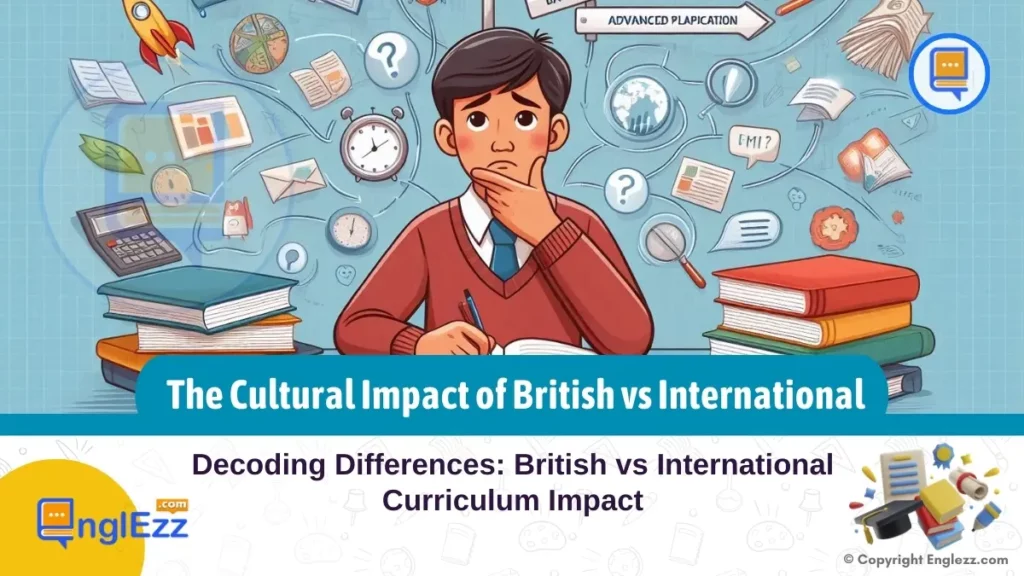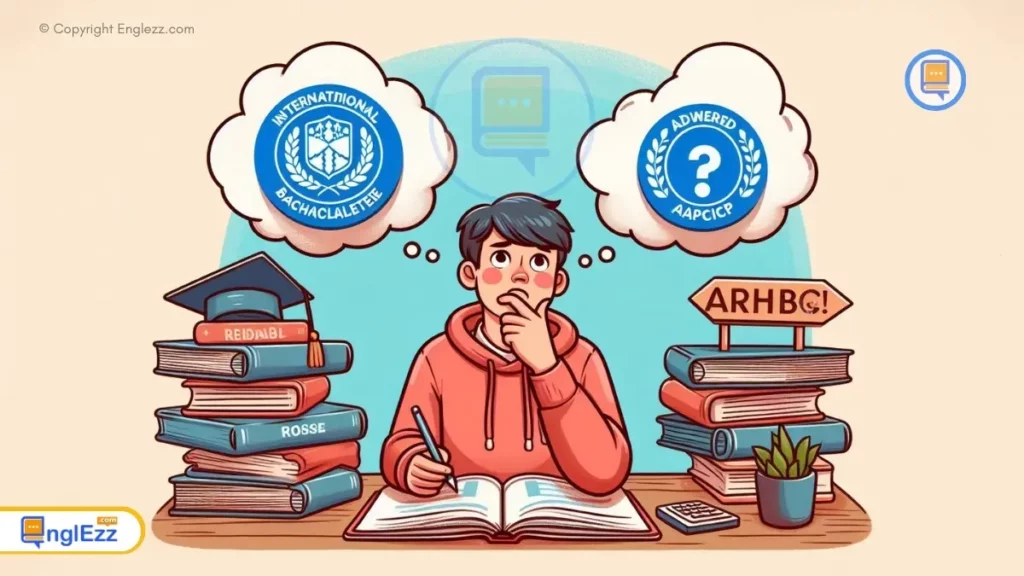In the vibrant landscape of education, the choice between British and international curricula stands as a pivotal crossroads, where cultural perspectives are woven into the very fabric of students’ educational journeys. Here lies a profound juncture, where decisions transcend mere academic structures to shape the core values, attitudes, and learning approaches of learners worldwide. The path taken resonates deeply within individuals, influencing not just what they know but also how they perceive the world around them.
Table of Contents
- Breaking Barriers: The Cultural Impact of British vs International Curriculum
- Understanding British Curriculum
- Exploring International Curriculum
- Cultural Impact on Students
- Educational Policies & Perspectives
- Nurturing Lifelong Learning
- Bridging Cultures Through Education
- Frequently Asked Questions:
- 1. What are the key differences between British and international curricula?
- 2. How do these curricular choices impact students’ cultural perspectives?
- 3. Can schools effectively blend elements from both curricula for holistic development?
- 4. What role do education policymakers play in promoting specific curricular frameworks?
- 5. How can collaboration between institutions offering different curricula enhance student outcomes?
Breaking Barriers: The Cultural Impact of British vs International Curriculum
Delving into this intricate realm unravels a tapestry of impacts far beyond classroom walls. The ripple effects of educational choices extend into shaping students’ identities, echoing through their interactions with diverse cultures and ideologies. As we navigate the vast expanse of curricular differences, we unveil a realm where each approach—British or international—serves as a compass guiding students towards distinct destinations of understanding and growth.

Join us on an exploratory journey that illuminates not just what students learn but how they embody knowledge, embracing a transformative narrative that bridges nations through the universal language of education. Let’s delve deeper into Breaking Barriers: The Cultural Impact of British vs International Curriculum – an odyssey that unveils educational choices as catalysts for cultural enrichment and intellectual evolution like never before.
Understanding British Curriculum
The British curriculum is renowned for its rich heritage and emphasis on holistic education. At the core of the British curriculum lies a commitment to nurturing critical thinking skills, fostering creativity, and maintaining academic rigor. This approach is designed not only to impart knowledge but also to cultivate analytical abilities and problem-solving aptitude among students. For instance, subjects like English Literature encourage students to delve deep into literary analysis, stimulating their cognitive faculties and honing their ability to interpret complex texts with nuance.
Moreover, the historical context of the British curriculum reveals a tapestry woven with tradition and innovation. Over centuries, the curriculum has evolved in response to societal changes and educational advancements. From the establishment of prestigious institutions like Oxford and Cambridge to the modernization efforts led by educational reformers, the British curriculum has continually shaped global educational standards. This evolution underscores a commitment to excellence and adaptability, ensuring that students are equipped with versatile skills that transcend borders and cultures.
Encourage students to embrace cultural diversity by integrating activities that celebrate different traditions, languages, and perspectives. For example, organizing a multicultural fair where students can share their heritage through food, music, and art can foster a sense of inclusivity and respect for various cultures. By creating a culturally rich environment within the educational setting, students learn to appreciate differences and build intercultural competence crucial for thriving in today’s globalized world.
By delving into the key features and philosophies underpinning the British curriculum, educators gain insight into a system that not only imparts knowledge but also instills values of perseverance, intellectual curiosity, and academic excellence in students. The fusion of tradition with contemporary teaching methodologies ensures that learners are prepared for a dynamic world where adaptability and agility are paramount. Ultimately, an understanding of the British curriculum unveils a tapestry interwoven with historical significance and pedagogical innovation that continues to influence educational practices globally.
Exploring International Curriculum
International curricula, often seen as a bridge between different cultures, are designed to nurture globally minded individuals equipped to navigate a diverse and interconnected world. The principles that drive international curricula emphasize fostering cultural diversity, promoting intercultural competence, and instilling a sense of global awareness in students.
By incorporating aspects of various cultures into the curriculum content, students are encouraged to appreciate different perspectives and develop empathy towards people from all walks of life. For instance, programs like the International Baccalaureate (IB) encourage students to engage with real-world issues from multiple cultural standpoints, preparing them for effective communication and collaboration in international settings.
In contrast to more traditional educational frameworks, international curricula are known for their adaptability and flexibility in accommodating the needs of an increasingly globalized society. These curricula integrate elements from various educational systems worldwide, allowing students to explore intercultural connections while developing transferable skills crucial for success in a multicultural environment. An example can be found in the Cambridge Assessment International Education (CAIE), which offers a range of subjects that enable students to appreciate different cultural contexts while maintaining academic rigor. This adaptability is particularly advantageous for schools aiming to provide students with a well-rounded education that transcends geographical boundaries.
In analyzing the impact of international curricula on student development, it becomes evident that these frameworks play a vital role in preparing learners for an interconnected world enriched by diversity. By encouraging cross-cultural understanding and nurturing intercultural competencies, international curricula equip students with the tools needed to thrive in culturally diverse environments while fostering respect for different traditions and beliefs.
Emphasize collaborative learning experiences that blend elements of both British and international curricula. Pairing students from different backgrounds to work on projects or engage in discussions enables them to leverage their unique strengths while developing teamwork skills and empathy. For instance, a history project that explores a global event from multiple cultural perspectives not only enhances critical thinking but also promotes mutual understanding and cooperation among students with diverse educational backgrounds.
In essence, the flexibility and emphasis on global perspectives within international curricula serve as catalysts for shaping well-rounded individuals capable of embracing diversity as an enriching aspect of their personal and professional lives.
Cultural Impact on Students
The choice between a British or international curriculum can profoundly influence students’ cultural identities and worldview. A British curriculum often emphasizes tradition, fostering a sense of national pride and historical appreciation among learners. For instance, students studying works by Shakespeare or learning about the impacts of colonization in history classes may develop a deeper connection to their heritage and identity. These educational experiences can shape students’ values, attitudes, and understanding of societal norms.

Conversely, exposure to an international curriculum can cultivate global perspectives and cross-cultural awareness among students. By engaging with diverse worldviews, traditions, and languages through subjects like global studies or multicultural literature, learners broaden their horizons beyond national borders. For example, participating in Model United Nations simulations or collaborating on projects with peers from different countries introduces students to the richness of global diversity and fosters empathy towards others’ beliefs and practices.
Education serves as a powerful medium for shaping individuals’ values, beliefs, and social interactions. Cultural immersion through either British or international curricula provides students with unique opportunities to explore their identities within different contexts. Whether it’s celebrating cultural festivals in school settings or engaging in intercultural dialogues with classmates from various backgrounds, these experiences not only enrich students’ educational journeys but also promote respect for diversity while enhancing their abilities to navigate an interconnected world. Ultimately, both types of curricula contribute significantly to individuals’ personal growth and readiness to thrive in diverse environments.
Educational Policies & Perspectives
In the realm of education, policymakers play a crucial role in shaping the curricular landscape within school systems. The decision to adopt either the British or international curriculum can have far-reaching implications on educational standards, cultural diversity, and students’ development. Policymakers are tasked with evaluating the merits of each curriculum framework and determining how these choices align with national educational goals and priorities. Understanding the nuances of each curriculum allows policymakers to make informed decisions that resonate with the broader objectives of the education system.
Stakeholders involved in the education sector hold diverse perspectives on the benefits and challenges associated with choosing between British and international curricula. Some advocate for the rigor and tradition embedded within the British curriculum, viewing it as a benchmark for academic excellence. On the other hand, proponents of international curricula emphasize its emphasis on global perspectives, cultural awareness, and adaptability to diverse learning needs. Balancing these viewpoints requires careful consideration of how each curriculum can complement existing educational practices while addressing gaps in students’ holistic development.
To foster collaboration between institutions offering different curricular frameworks, policymakers can explore hybrid models that integrate aspects of both British and international curricula. By combining elements such as critical thinking skills from the British approach with global citizenship initiatives from international programs, schools can provide students with a comprehensive educational experience that prepares them for an interconnected world.
Integrate global citizenship education into the curriculum to instill values of social responsibility, sustainability, and ethical awareness. Encouraging students to participate in community service projects or engage in discussions on pressing global issues cultivates their sense of agency as global citizens. Through initiatives like pen-pal programs with schools abroad or virtual exchanges, students can develop cross-cultural communication skills and expand their worldview beyond the confines of traditional academic boundaries.
Encouraging dialogue among educators, sharing best practices across institutions, and investing in professional development opportunities can further enhance students’ learning outcomes regardless of their chosen curriculum pathway. Through strategic partnerships and an openness to innovation, education policymakers can create a harmonious blend of educational practices that enrich students’ cultural perspectives and expand their horizons.
Nurturing Lifelong Learning
In the realm of education, fostering a passion for lifelong learning stands as a cornerstone for empowering students to navigate an ever-evolving world. Regardless of whether educators opt for a British or international curriculum, instilling this love for continuous discovery is paramount. By encouraging students to see learning not merely as a means to an end but as a lifelong journey rich in experiences and growth opportunities, educators lay the foundation for resilient, adaptable individuals.
To cultivate holistic development in students, educators can draw from the strengths of both British and international curricula. Integrating elements like the emphasis on critical thinking and creativity from the British curriculum with the global awareness and cultural sensitivity promoted by international frameworks can create a well-rounded educational experience. By embracing the diversity of pedagogical methods, educators can tailor their approaches to suit individual learning preferences effectively, ensuring that no student is left behind.
Embracing a balanced approach that values curiosity, innovation, and cultural literacy enables educators to nurture well-rounded individuals capable of thriving in an interconnected world. By amalgamating the best practices from various educational frameworks and adapting them to suit their unique contexts, schools can create vibrant learning environments where students are encouraged to explore, question, and grow. Ultimately, instilling a love for lifelong learning transcends the boundaries of specific curricula; it is about fostering a mindset that celebrates intellectual curiosity and continuous self-improvement throughout one’s educational journey.
Bridging Cultures Through Education
In exploring the cultural impact of British vs international curriculum, it becomes evident that both educational frameworks play a crucial role in shaping students’ perspectives, values, and interactions. While the British curriculum emphasizes critical thinking and academic rigor, the international curriculum promotes global awareness and intercultural competence. By recognizing the strengths of each system and encouraging a harmonious integration of diverse pedagogical approaches, educators can bridge cultures through education effectively.
To foster a learning environment that transcends boundaries and nurtures inclusive mindsets, schools can incorporate elements from both British and international curricula. By embracing cross-cultural dialogues, celebrating diversity, and encouraging collaborative projects that connect students from different backgrounds, institutions can create enriching educational experiences that prepare learners for an interconnected world. For instance, implementing exchange programs where students from British curriculum schools interact with those following international curricula can promote mutual understanding and respect for differing cultural perspectives.
Ultimately, the goal of education should not solely focus on adhering to a specific curriculum but rather on cultivating lifelong learners who appreciate the richness of global diversity. By fostering empathy, adaptability, and open-mindedness in students through a balanced educational approach that integrates British traditions with international perspectives, educators can empower future generations to navigate complex societal challenges with cultural sensitivity and resilience. Bridging cultures through education is not just about transmitting knowledge but also about fostering relationships that transcend geographical borders and promote unity in diversity.
Frequently Asked Questions:
1. What are the key differences between British and international curricula?
– The British curriculum focuses on academic rigor and critical thinking skills while international curricula emphasize cultural diversity, global awareness, and intercultural competence.
2. How do these curricular choices impact students’ cultural perspectives?
– Students exposed to the British curriculum may develop a strong sense of identity shaped by historical influences. Conversely, those engaged in international curricula often exhibit openness to diverse cultures and worldviews.
3. Can schools effectively blend elements from both curricula for holistic development?
– Yes, educators can integrate aspects of both British and international curricula to provide students with a well-rounded education that nurtures not only academic excellence but also global citizenship values.
4. What role do education policymakers play in promoting specific curricular frameworks?
– Policymakers influence educational practices by supporting either British or international curricula based on goals related to national identity formation or preparing students for global citizenship.
5. How can collaboration between institutions offering different curricula enhance student outcomes?
– Collaborative efforts can facilitate knowledge exchange between educators utilizing various frameworks which benefits students through exposure to diverse teaching methods and approaches.
In fostering harmony between differing educational philosophies, we sow seeds of mutual respect and understanding that will bloom into a shared vision of interconnectedness among learners worldwide.








